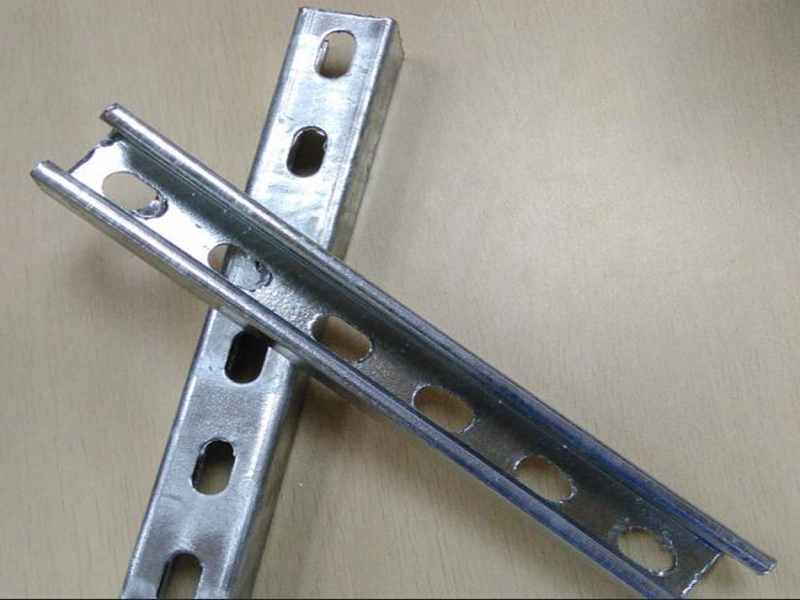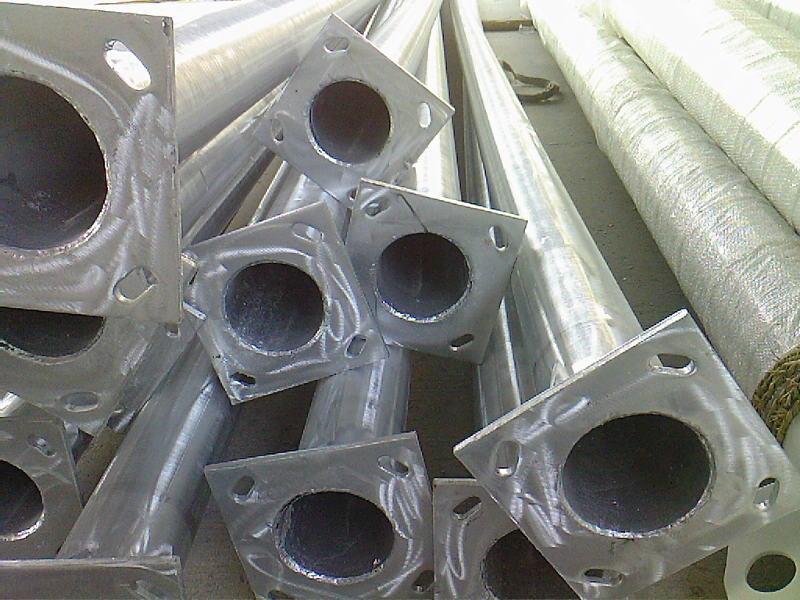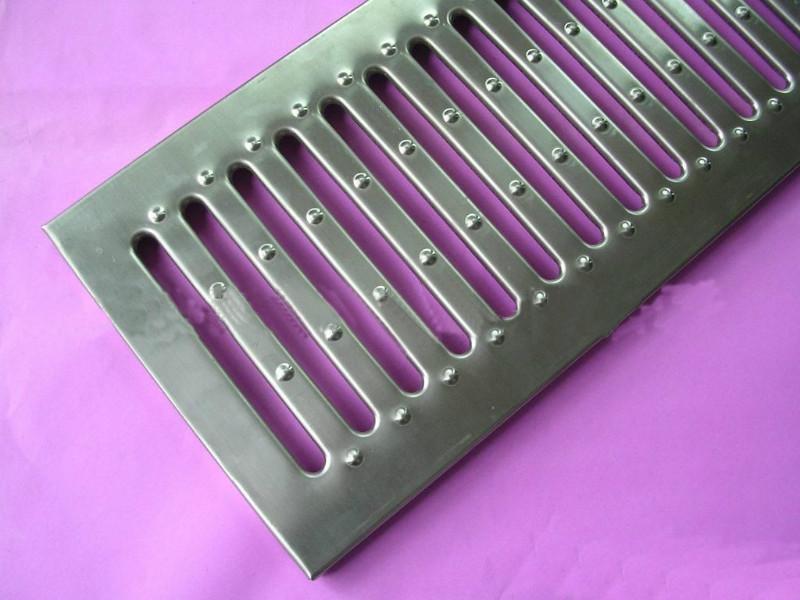Hot-dip galvanizing, also known as hot-dip galvanizing and hot-dip galvanizing: is an effective metal anti-corrosion method, mainly used in metal structures in various industries. The rust-removed steel is immersed in a zinc solution melted at about 500 ° C to adhere the zinc layer to the surface of the steel member, thereby preventing corrosion. Hot-dip galvanizing process: finished pickling-washing-assisting plating-drying-hanging-cooling-pharmaceutical-cleaning-grinding-hot galvanizing is completed. Hot-dip galvanizing is a result of the older hot-dip method. Since the application of hot-dip galvanizing in France in 1836, it has been more than 170 years old. In the past three decades, with the rapid development of cold-rolled strip, the hot-dip galvanizing industry has been developed on a large scale.

Protective performance:
Generally, the thickness of the electroplated zinc layer is 5 to 15 μm, and the thickness of the hot-dip galvanized layer is generally 35 μm or more, or even as high as 200 μm. Hot-dip galvanizing coverage is good, the coating is dense, and there is no organic inclusions. It is well known that the mechanism of anti-atmospheric corrosion of zinc is mechanically protected and electrochemically protected. Under atmospheric corrosion conditions, there are ZnO, Zn(OH)2 and basic zinc carbonate protective films on the surface of the zinc layer, which slows down the corrosion of zinc to some extent. The protective film of the layer (also called white rust) is destroyed and a new film layer is formed.
When the zinc layer is seriously damaged and the iron matrix is endangered, zinc electrochemically protects the matrix. The standard potential of zinc is -0.76V, the standard potential of iron is -0.44V. When zinc and iron form a microbattery, zinc is dissolved as an anode. Protected as a cathode. It is obvious that hot-dip galvanizing is superior to electro-galvanizing in the resistance to atmospheric corrosion of the base metal iron.
Galvanized layer formation process:
The hot-dip galvanizing layer formation process is a process of forming an iron-zinc alloy between the iron matrix and the outermost pure zinc layer, and the surface of the workpiece forms an iron-zinc alloy layer during hot dip plating, so that the iron and the pure zinc layer are very For a good combination, the process can be simply described as: when the iron workpiece is immersed in the molten zinc liquid, a zinc and an alpha iron (body center) solid solution are first formed at the interface. This is a crystal formed by the dissolution of zinc atoms in the solid state of the base metal iron. The fusion between the two metal atoms is relatively small. Therefore, when zinc is saturated in the solid solution, the two elements of zinc and iron diffuse into each other, and the zinc atoms diffused into (or infiltrated into) the iron matrix migrate in the matrix lattice, gradually forming an alloy with iron, and diffusing. The iron in the molten zinc solution forms an intermetallic compound with zinc and sinks into the bottom of the hot-dip galvanizing pot, which is zinc dross. When the workpiece is removed from the zinc immersion liquid, a pure zinc layer is formed on the surface, which is a hexagonal crystal. Its iron content is not more than 0.003%.
Production Process:
Feeding → pickling, washing → solvent → drying → hot galvanizing → inner and outer blowing → rolling label, marking → passivation → inspection → packaging.

Industrial method:
The production process of hot-dip galvanized sheet mainly includes: preparation of original board → pre-plating treatment → hot dip plating → post-plating treatment → finished product inspection. According to the habit, the hot-dip galvanizing process is divided into two categories: off-line annealing and in-line annealing according to different pre-plating treatment methods.
1. Out-of-line annealing
Before the hot-rolled or cold-rolled steel sheet enters the hot-dip galvanizing line, it is first subjected to recrystallization annealing in a bottom-type annealing furnace or a bell-type annealing furnace, so that the annealing process is not performed on the galvanizing line. The steel sheet must maintain a clean, pure iron active surface free of oxides and other contaminants prior to hot dip galvanizing. In this method, the annealed surface scale is first removed by pickling, and then coated with a solvent consisting of zinc chloride or a mixture of ammonium chloride and zinc chloride to prevent the steel sheet from being oxidized again. . Hot-dip galvanizing methods belonging to this category include: wet hot-dip galvanizing, single-sheet steel and Huilin thermal.
1) Wet process
The solvent on the surface of the steel sheet is hot-dip galvanized without being dried (i.e., the surface is still wet) into the zinc liquid whose surface is covered with the molten solvent. The disadvantages of this method are: 1. It can only be galvanized in a lead-free state, the alloy layer of the coating is very thick and the adhesion is very bad. 2. The generated zinc slag is accumulated at the interface between the zinc liquid and the lead liquid and cannot be deposited at the bottom of the pot (because the specific gravity of the zinc slag is greater than that of the zinc liquid and less than the lead liquid), so that the steel sheet contaminates the surface by passing through the zinc layer. Therefore, this method has been basically eliminated.
2) Single sheet steel
This method generally uses a hot-rolled rolled sheet as a raw material. First, the hot-dip galvanizing plant feeds the annealed steel sheet into a pickling plant, and removes the oxygen hot-dip galvanized iron sheet on the surface of the steel sheet with sulfuric acid or hydrochloric acid. The steel plate after pickling is immediately immersed in a water tank for galvanizing, which prevents the steel plate from reoxidizing. After pickling, water washing, squeezing, drying, entering the zinc pot (temperature has been maintained at 445-465 ° C) hot-dip galvanizing, and then oiling and chromizing. The hot-dip galvanized sheet produced by this method has a significantly improved quality than the wet-galvanized product, and has a certain value only for small-scale production.
3) Huilin Thermal Method
The continuous galvanizing production line includes a series of pre-treatment processes such as lye degreasing, hydrochloric acid pickling, water rinsing, solvent coating, drying, etc., and the original plate needs to be subjected to hood annealing before entering the galvanizing line. This method has complicated production process and high production cost. More importantly, the products produced by this method often have solvent defects and affect the corrosion resistance of the coating. Moreover, the AL in the zinc pot often acts on the surface of the steel sheet to form aluminum trichloride and is consumed, and the adhesion of the plating layer is deteriorated. Therefore, although this method has been published for nearly 30 years, it has not been developed in the world hot-dip galvanizing industry.
2. In-line annealing
The coil is directly supplied as a hot-dip galvanized original sheet from a cold-rolled or hot-rolled shop, and gas-shielded recrystallization annealing is performed in the hot-dip galvanizing line. Hot-dip galvanizing methods belonging to this category include: Sendzimir Act, Modified Sendzimir Act, US Steel Law (with Kawasaki Act of Japan); Silas Act; Sharon Law.
1) Sendzimir Law
It combines the annealing process and the hot-dip galvanizing process. The in-line annealing mainly consists of an oxidation furnace and a reduction furnace. The strip steel is directly heated to about 450 degrees in the oxidation furnace, and the rolling oil remaining on the strip surface is burned off to purify the surface. After that, the strip is heated to 700-800 degrees to complete the recrystallization annealing. After the cooling section is controlled, the temperature before entering the zinc pot is about 480 degrees. Finally, the zinc pot is galvanized without contact with air. Therefore, the Senjimir method yields. High and good galvanizing quality, this method has been widely used.
2) US Steel Law
It is a variant of the Sendzimir method. It simply replaces the degreasing of the oxidizer with an alkaline electrolytic degreasing tank. The rest of the process is basically the same as the Sendzimir method. After the original board enters the working line, the electrolytic degreasing is first performed, then washed, dried, and then recrystallized and annealed by a reducing furnace having a protective gas, and finally, hot-dip galvanizing is entered into the zinc pot under sealing. In this method, since the strip steel is not heated by the oxidation furnace, the oxide film on the surface is thin, and the hydrogen content of the shielding gas in the reduction furnace can be appropriately reduced. This is beneficial to furnace safety and reduced production costs. However, since the strip steel is not preheated, it enters the reduction furnace, which undoubtedly increases the heat load of the reduction furnace and affects the life of the furnace. Therefore, this method has not been widely used.
3) Silas Act
Also known as the direct heating method of flame; firstly, the strip is eluted with alkali by alkali, and then the scale of the surface is removed with hydrochloric acid, washed with water, dried, and then passed into a vertical in-line annealing furnace directly heated by a gas flame, and the furnace is strictly controlled. The ratio of the gas to the air is so that the incomplete flame is burned in the case of excess gas and insufficient oxygen, thereby causing a reducing atmosphere in the furnace. It is rapidly heated to a recrystallization temperature and the strip is cooled under a low hydrogen protective atmosphere, and finally immersed in a zinc liquid in a sealed state for hot-dip galvanizing. The method is compact, with low investment costs and high output (up to 50/hour). However, the production process is complicated, especially when the unit is stopped, in order to avoid burning the strip steel, it is necessary to adopt a method in which the furnace traverses away from the steel strip, so that there are many operational problems, so the hot-dip galvanizing industry adopts this method very little.
4) Sharon Law
In 1939, Sharon Company of the United States put into production a new type of hot-dip galvanizing unit, so it is also called Sharon Law. This method is to inject a hydrogen chloride gas into the strip in an annealing furnace and bring the strip to a recrystallization temperature, so it is also called a gas pickling method. Pickling with hydrogen chloride gas not only removes the scale on the surface of the strip, but also removes the grease on the surface of the strip. Since the surface of the strip is corroded by oxidizing gas to form a pockmark, the coating obtained by the Sharon method is adhered. Very good. However, due to the serious corrosion of the equipment, it causes high equipment maintenance and renewal costs. Therefore, this method is rarely used.
5) Improve Senjimi
It is a more superior hot-dip galvanizing process; it connects the separate oxidation furnaces and reduction furnaces in the Sendzimir method from a smaller cross-section aisle, including preheating furnaces, reduction furnaces and cooling sections. The entire annealing furnace inside constitutes an organic whole. Practice has proved that the law has many advantages: high quality, high yield, low consumption, safety and other advantages have gradually been recognized. It has developed very fast. Almost all of the new lines have been used since 1965. The Sendzimir units have also been modified in this way.

Advantages of hot dip galvanizing:
1. Low processing cost: the cost of hot dip galvanizing rust is lower than that of other paint coatings;
2. Durable: in the suburban environment, the standard hot-dip galvanized rust thickness can be maintained for more than 50 years without repair; in urban or offshore areas, the standard hot-dip galvanized rust layer can be maintained for 20 years without repairing ;
3. Good reliability: the galvanized layer and the steel are metallurgically combined and become a part of the steel surface, so the durability of the coating is relatively reliable;
4. The toughness of the coating: The galvanized layer forms a special metallurgical structure that can withstand mechanical damage during transportation and use;
5. Comprehensive protection: each part of the plated parts can be plated with zinc, even in the depressions, sharp corners and hidden places can be fully protected;
6. Save time and effort: the galvanizing process is faster than other coating construction methods, and can avoid the time required to paint on the construction site after installation.
7. Low initial cost: Under normal circumstances, the cost of hot dip galvanizing is lower than that of other protective coatings. The reason is very simple. Other protective coatings such as sanding paint are labor-intensive processes, whereas hot dip galvanizing processes are high. Mechanized, tightly controlled in-plant construction.
8. Simple and convenient inspection: hot dip galvanized layer can be tested visually and simply non-destructive coating thickness gauge
9. Reliability: The specifications of hot dip galvanizing are generally carried out in accordance with BS EN ISO 1461, and the minimum zinc layer thickness is limited, so the rust prevention period and performance are reliable and predictable.

